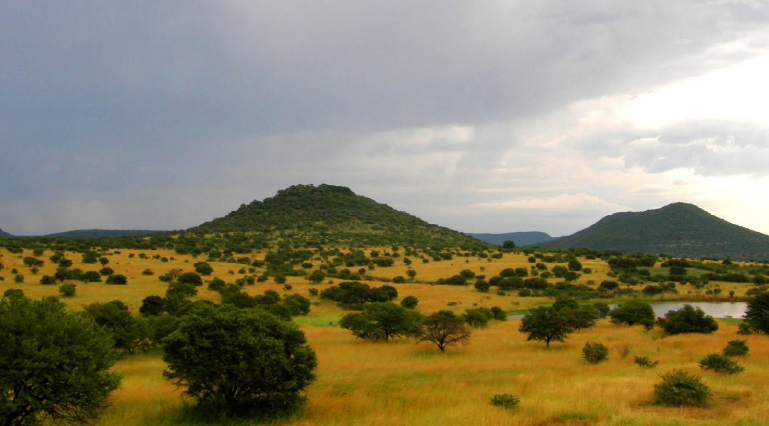How Landscape Helped Land Animals Evolve Cognitive Ability of Planning Better Than Aquatic Counterparts

African Savanna. Image Courtesy: Wikimedia Commons.
Animals on land are cognitively more advanced than most of their aquatic counterparts. One of these faculties include planning for the future. There is a difference between a planned move and a move which is the result of intrinsic habitual instincts.
Lets take an example. When a fish (a prey) senses an attack by a predator, the immediate move it makes is to go in the opposite direction, which comes out of habitual instincts. But for a land animal, both in prey and predators, things might become a bit different. A predator plans in advance before unleashing the attack on his prey, and the prey in return will also behave in a manner that goes beyond what is simply behavioural instinct.
“All animals -- on land or in water -- had the same amount of time to evolve, so why do land animals have most of the smarts?”—was the question that led Professor Malcolm Maclver of Northwestern University to conduct an elaborate experiment. The results of it has been published in Nature Communication on June 16.
Malcolm Maclver has been engaged in a series of studies to find out why and how the land animals have evolved the ability to plan. The Nature paper is the latest one of the series of studies.
The research findings show that complex landscapes have given impetus to the evolution of advanced cognitive abilities of planning in case of land animals. While open water is vastly empty, land is filled with obstacles—trees, hills, water streams etc. in between vast open fields. This has provided the prey spaces to hide and the predators could hide themselves before a sneak attack is being attempted. This landscape composition, according to Malcolm, might have provided the land animals the ability of planning.
But, there is also a limit that a landscape provides an evolutionary edge to the animals dwelling on it. The researchers found that either simple landscape like open fields or packed landscapes like dense forests could not offer any advantage for the land animals.
Malcolm, a professor of biomedical and mechanical engineering, in his previous studies found those animals who rose from water and invaded the land, somewhere 385 million years back, developed their capacity to see to an enormous distance than they could inside water. His hypothesis suggests that the ability to see much further from the perspective of a prey or a predator, needed more brain power than hunting in open and vastly empty water. But the new study throws new light to this previous hypothesis and suggests that not only better vision capacity but also landscape characteristics provided the land animals the edge to develop planning ability, which is required in the land mixed of plain, vegetation, hills, water, etc.
“We speculated that moving onto land poured jet fuel on the evolution of the brain as it may have advantaged the hardest cognitive operation there is: Envisioning the future. It could explain why we can go out for seafood, but seafood can't go out for us,” Malcolm is quoted to have said.
Stating this hypothesis, Malcolm and his colleagues started with computer simulations in order to test the survival rates of prey hunted by a predator in two circumstances. Number one is habit based, that is instinctive and number two is plan based, that is out of possible ways, selecting the near perfect one. The team created an open world without much obstacles to mimic an aquatic condition and then added objects of different densities to mimic a land.
In a situation that depicts simple aquatic or terrestrial environments, as the study found, survival rate of the prey that uses habit-based instinctive drive and also those having planning capacity is low. Same was the case for too densely packed environment like coral reefs or the dense rainforests.
“In those simple open or highly packed environments, there is no benefit to planning. In the open aquatic environments, you just need to run in the opposite direction and hope for the best. While in the highly packed environments, there are only a few paths to take, and you are not able to strategise because you can't see far. In these environments, we found that planning does not improve your chances of survival,” he said.
But landscapes like that of Savanna, having open fields with patches of vegetation, the findings show, increase the survival rate for those having planning capabilities. As planning increases, the likelihood of survival that the brain structure provided the animals planning capacity could have been evolutionarily selected.
Get the latest reports & analysis with people's perspective on Protests, movements & deep analytical videos, discussions of the current affairs in your Telegram app. Subscribe to NewsClick's Telegram channel & get Real-Time updates on stories, as they get published on our website.














